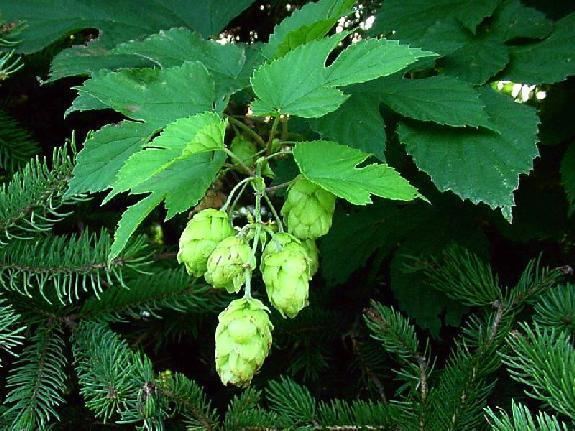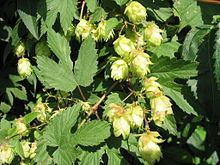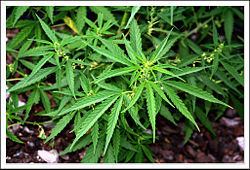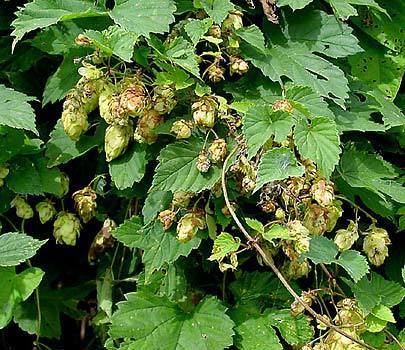Rank Family | Scientific name Cannabaceae | |
 | ||
Lower classifications Hemp, Hop, Common hop, Hackberries | ||
Planta de marihuana de 3 meses
Cannabaceae is a small family of flowering plants. As now circumscribed, the family includes about 170 species grouped in about 11 genera, including Cannabis (hemp, marijuana), Humulus (hops) and Celtis (hackberries). Celtis is by far the largest genus, containing about 100 species.
Contents

Other than a shared evolutionary origin, members of the family have few common characteristics; some are trees (e.g. Celtis), others are herbaceous plants (e.g. Cannabis).

Description
Members of this family can be trees (e.g. Celtis), erect herbs (e.g. Cannabis), or twining herbs (e.g. Humulus).

Leaves are often more or less palmately lobed or palmately compound and always bear stipules. Cystoliths are always present and some members of this family possess laticifers.
Cannabaceae are often dioecious (distinct male and female plants). The flowers are actinomorphic (radially symmetrical) and not showy, as these plants are pollinated by the wind. As an adaptation to this kind of pollination, the calyx is short and there is no corolla. Flowers are grouped to form cymes. In the dioecious plants the masculine inflorescences are long and look like panicles, while the feminine are shorter and bear less flowers. The pistil is made of two connate carpels, the usually superior ovary is unilocular; there is no fixed number of stamens.
The fruit can be an achene or a drupe.
Phylogeny

Classification systems developed prior to the 1990s, such as those of Cronquist (1981) and Dahlgren (1989), typically recognized the order Urticales, which included the families Cannabaceae, Cecropiaceae, Celtidaceae, Moraceae, Ulmaceae and Urticaceae, as then circumscribed. Molecular data from 1990s onwards showed that these families were actually embedded within the order Rosales, so that from the first classification by the Angiosperm Phylogeny Group in 1998, they were placed in an expanded Rosales, forming a group which has been called "urticalean rosids".

A molecular phylogenetic study in 2002 produced the consensus tree shown below. This showed that the family Celtidaceae was paraphyletic if the Cannabaceae, as then circumscribed, were removed. Accordingly, a single larger family was required, combining the two existing families. Under the rules of the International Code of Nomenclature for algae, fungi, and plants, the oldest family name must be used: this is Cannabaceae.
List of genera
The following genera are listed by the Angiosperm Phylogeny Website, as of October 2011:
Uses
Carbon dating has revealed that these plants may have been used for ritual/medicinal purposes in Xinjiang, China as early as 494 B.C.
Hop (Humulus lupulus) has been the predominant bittering agent of beer for hundreds of years. The flowers' resins are responsible for beer's bitterness and their ability to extend shelf life due to some anti-microbial qualities. The young shoots are used as vegetable.
Different subspecies of hemp (Cannabis sativa) are cultivated for the production of fiber, as a source of cheap oil, for the nutritious seeds, or its edible leaves.
Species in the genus Cannabis are cultivated for medical or recreational use as marijuana. Several selectively bred "strains" have been produced for both higher and lower yields of THC, other cannabinoids, as well as terpenes with desired flavors or aromas, such as blueberry, strawberry, or even citrus.
Many trees in the genus Celtis are grown for landscaping and ornamental purposes.
